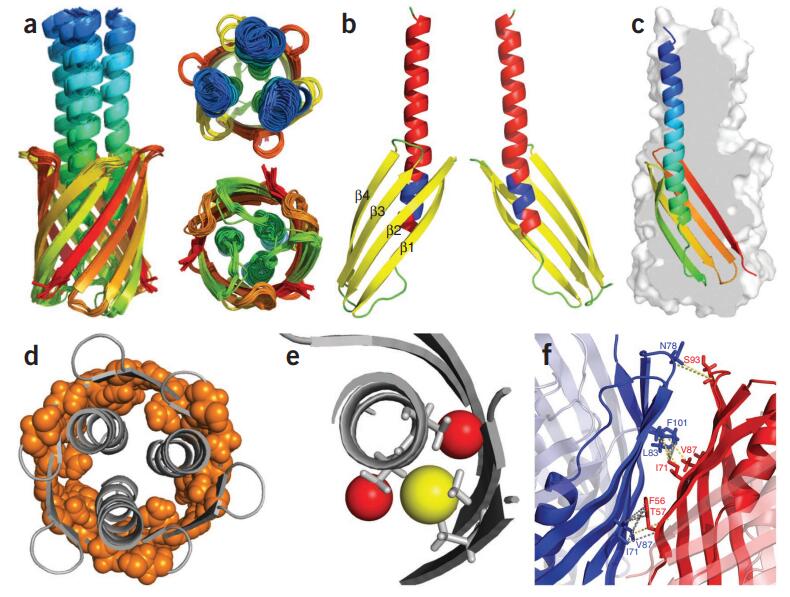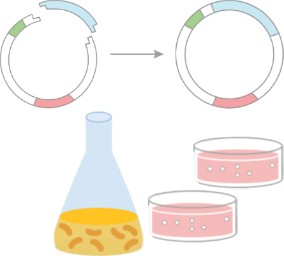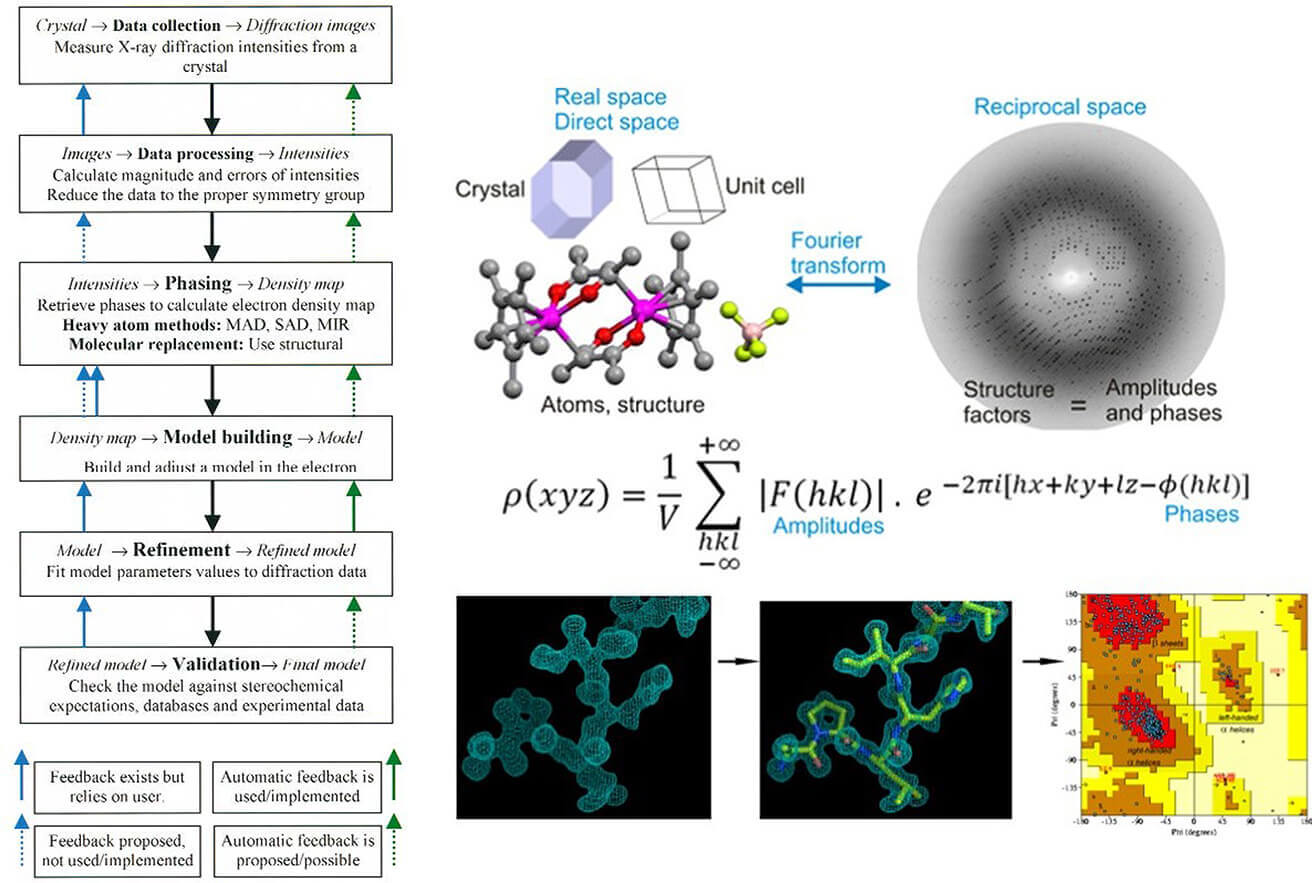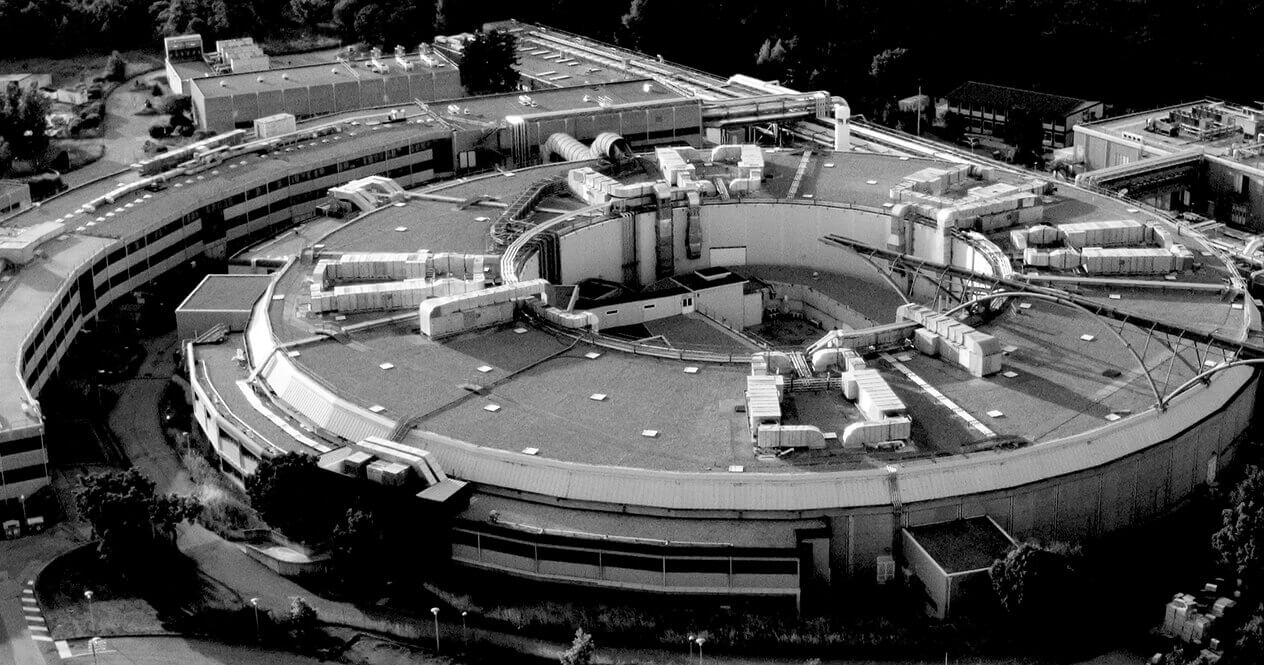Powder X-ray Diffraction (PXRD) is a widely used analytical technique in fields such as materials science, chemistry, pharmaceuticals, and geology. By studying the interaction between X-rays and crystalline materials, PXRD helps scientists understand a material's crystal structure, phase composition, and other crystallographic properties. In this article, we will explore the basic principles of PXRD, experimental methods, data analysis techniques, and its diverse applications across various industries.
What is Powder X-ray Diffraction (PXRD)?
Powder X-ray Diffraction (PXRD) is a technique that uses the interaction of X-rays with crystalline materials to determine their structure. Unlike single-crystal X-ray diffraction, which requires single crystals, PXRD is used for polycrystalline materials, such as powders or small crystals. When X-rays pass through these materials, they are diffracted by the crystal planes, and the resulting diffraction patterns can be used to infer structural details like lattice parameters, phase composition, and crystallite size. PXRD has been crucial in pharmaceutical research for identifying different polymorphs of drug molecules, which can have varying physical properties, such as solubility and bioavailability.
Read our article Single-Crystal XRD vs. Powder XRD: Selecting the Appropriate Technique for more information.
 Figure 1. A typical X-ray diffractogram of a pharmaceutical drug showing the d-values of the diffraction peaks for structural analysis. (Chauhan A, et al., 2014)
Figure 1. A typical X-ray diffractogram of a pharmaceutical drug showing the d-values of the diffraction peaks for structural analysis. (Chauhan A, et al., 2014)
Principles of Powder X-ray Diffraction (PXRD)
X-ray and Crystal Interaction
The core principle of PXRD is Bragg's Law (nλ = 2d sinθ), which describes the conditions for diffraction. In this equation, n is the diffraction order, λ is the wavelength of the X-ray, d is the interplanar spacing, and θ is the diffraction angle. Diffraction occurs when the incident X-rays interact with the crystal lattice. The relationship between the X-ray wavelength and the interplanar spacing determines the diffraction angle.
Diffraction Geometry: X-rays undergo elastic scattering (coherent diffraction) when interacting with electrons in the crystal, while inelastic scattering (e.g., Compton scattering) contributes minimally to the diffraction signal. PXRD mainly focuses on the elastic scattering component to form diffraction patterns.
Characteristics of Powder Samples
Powder samples consist of numerous randomly oriented crystallites. This structural feature allows PXRD to generate a series of diffraction rings, known as Debye-Scherrer rings. These rings' intensity distributions and angular positions provide critical information about the crystal's properties.
Formation of Diffraction Peaks: Diffraction peaks arise from the superposition of reflections from different crystal planes. Each plane reflects X-rays at specific angles, creating characteristic peaks. By analyzing these peaks, one can deduce the crystal structure and material properties.
PXRD Instrumentation and Operation
PXRD instruments consist of several key components:
X-ray Source: X-ray tubes typically use copper (Cu Kα) or molybdenum (Mo Kα) targets, each with specific applications. Copper is most commonly used in routine PXRD due to its effective wavelength for analyzing a wide range of materials.
Goniometer: This is used to control the angle at which X-rays are incident on the sample. The θ-2θ scanning mode is most common, where both the X-ray source and detector rotate to collect diffraction data.
Detector: Detectors can be point detectors or more advanced one-dimensional and two-dimensional detectors. One-dimensional detectors, for example, offer faster data collection, especially useful when analyzing large samples or collecting data over a wide angle range.
PXRD Experimental Methods
PXRD Sample Preparation
Sample preparation is a critical step in ensuring successful PXRD experiments. Powder samples need to be thoroughly ground to avoid preferred orientation effects, which can distort diffraction data. Uniformity of the sample is essential to achieve accurate results.
Sample Loading: Various loading techniques are available, including the back-pressure method, capillary method, and zero-background sample holder. Choosing the correct loading technique ensures uniform sample distribution and minimizes errors in diffraction data.
Optimizing Data Collection Parameters
Scan Range (2θ Range): The appropriate scan range depends on the material being analyzed (inorganic, organic, nanomaterials). Selecting the correct angle range ensures all relevant diffraction peaks are captured.
Step Size and Counting Time: The choice of step size and counting time impacts the resolution and signal-to-noise ratio of the data. Smaller step sizes and longer counting times yield higher precision but require more time for data collection.
Temperature and Atmosphere Control: Temperature-controlled XRD experiments can monitor phase transitions in materials. Controlling the atmosphere (e.g., vacuum or inert gas) is essential for accurate measurement, particularly when studying sensitive materials.
PXRD Data Analysis
Data Processing and Background Subtraction
PXRD data typically includes interference from air scattering, fluorescence backgrounds, and other extraneous signals. Using software such as JADE, HighScore, and TOPAS, researchers can subtract these backgrounds and obtain cleaner diffraction patterns.
Kα2 Removal: Due to the X-ray source's doublet (Kα1/Kα2), it is essential to perform Kα2 removal to reduce peak overlap and errors, ensuring more accurate results.
Phase Identification and Qualitative Analysis
Phase identification involves comparing experimental diffraction patterns with standard reference databases, such as the ICDD PDF. These databases contain patterns for various materials, which can be used to identify unknown phases in a sample.
Example Analysis: A common example of phase identification is matching diffraction data for quartz or ZnO. The process involves comparing observed peaks with database entries to confirm the material's identity.
Crystal Structure Refinement and Quantitative Analysis
Crystal structure refinement, such as the Rietveld method, optimizes the structural model to fit the experimental data. This process improves the accuracy of the crystal structure by minimizing discrepancies between the calculated and observed diffraction patterns.
Key Parameters: The refinement quality is assessed using parameters like Rwp (weighted profile R-factor), Rp (profile R-factor), and χ² (chi-squared). These values indicate how well the refined model matches the experimental data.
Advantages of Powder X-Ray Diffraction (PXRD)
- Phase Identification: This is one of the primary applications of PXRD. Each crystalline material has a unique diffraction pattern. By comparing the experimentally obtained diffraction pattern with standard databases (such as the ICDD PDF), the phases present in the sample can be accurately identified.
- Quantitative Analysis: By analyzing the intensities of the diffraction peaks of different phases, the relative amounts of each phase in a sample can be determined. PXRD can provide reliable quantitative information for multiphase mixtures.
- Structure Parameter Determination: Through Rietveld refinement of the diffraction pattern, crystal cell parameters (such as lattice constants and cell angles) and partial atomic position information can be obtained. This is crucial for understanding the structural properties of materials.
- Simple Sample Preparation: Compared to single-crystal X-ray diffraction, PXRD has less stringent requirements for sample morphology. Usually, the sample only needs to be ground into a fine powder for analysis. For certain samples, such as thin films, direct analysis is also possible.
- Non-destructive or Minimally Destructive: In most cases, PXRD analysis does not damage the sample or requires only a small amount of sample, making it suitable for studying valuable materials.
- Wide Range of Applications: PXRD can be applied to various crystalline materials, including inorganic substances, organic compounds, metals, ceramics, and polymers.
- Relatively Accessible Equipment: Compared to some more advanced structural analysis techniques, PXRD instruments are relatively common in research institutions and industry, and the cost is also relatively lower.
- Relatively Fast Analysis: Acquiring a PXRD dataset typically takes only a few minutes to tens of minutes, allowing for rapid determination of the sample's phase information.
- Can Perform Variable Temperature/In-situ Analysis: By equipping appropriate accessories, variable temperature PXRD analysis can be performed to study the phase transition behavior of materials at different temperatures. In-situ analysis can also be conducted to monitor structural changes in materials during reaction processes in real-time.
Limitations of Powder X-Ray Diffraction (PXRD)
- Only Applicable to Crystalline Materials: PXRD can only analyze crystalline materials with long-range ordered structures. Amorphous or non-crystalline substances will not produce well-defined diffraction peaks.
- Requires Sufficient Sample Purity: If there are significant amounts of impurities in the sample, they may interfere with the accurate identification of phases.
- Particle Size Effects:
Large Particles: Can lead to uneven diffraction peak intensities and even particle statistics issues.
Small Particles (Nanoscale): Can cause broadening of the diffraction peaks, affecting the resolution and accuracy of structural parameters.
- Preferred Orientation: If the crystallites in the sample have a significant preferred orientation, the intensities of the diffraction peaks will deviate from theoretical values, leading to inaccurate quantitative analysis results and even affecting phase identification.
- Limited Resolution: For phases with very similar structures or complex mixtures, the resolution of PXRD may not be sufficient for complete separation.
- Limited Sensitivity: For phases present in low concentrations, their diffraction peaks may be very weak and difficult to detect. Typically, the detection limit of PXRD is around a few weight percent.
- Difficult to Determine Light Element Positions: X-rays interact weakly with light elements (such as hydrogen and lithium), so PXRD has a weak scattering power for these elements, making it difficult to accurately determine their positions in the crystal structure.
- Difficult to Analyze Crystals with Complex Structures or Low Symmetry: For crystals with very complex structures or low symmetry, their diffraction patterns will be very complicated, making accurate structural refinement difficult.
- Cannot Provide Microscopic Morphology Information: PXRD can only provide average information about the crystal structure and cannot reveal information about the sample's microscopic morphology, particle shape, and distribution.
Applications of Powder X-ray Diffraction (PXRD)
Pharmaceutical Industry - Polymorph Identification and Quality Control
PXRD plays a critical role in the pharmaceutical industry, particularly in the identification and characterization of polymorphs. Polymorphs are different crystal forms of the same substance, which can exhibit varying physical properties such as solubility and stability. PXRD enables the detection of different polymorphs, ensuring that the correct form is used in drug formulation.
- Polymorph Identification: PXRD is used to identify polymorphs of active pharmaceutical ingredients (APIs), ensuring consistent drug performance.
- Stability and Quality Control: Monitoring polymorph changes over time helps in assessing the stability of the drug and ensuring consistent quality during production.
- Hydrate and Solvate Characterization: PXRD is also essential in studying the formation of hydrates and solvates in pharmaceuticals, as these can influence the drug's stability, solubility, and bioavailability.
Please read our article X-ray Powder Diffraction in Drug Polymorph Analysis to get more information.
Materials Science and Nanotechnology - Crystallite Size and Structure Analysis
In materials science, PXRD is a powerful tool for studying the crystallite size and structural characteristics of materials, particularly in nanotechnology. PXRD provides insights into the nano-scale properties of materials, which is crucial for applications in electronics, energy storage, and coatings.
- Crystallite Size Measurement: PXRD is used to calculate the crystallite size of nanoparticles using the Scherrer equation, which is important in determining the properties of nanomaterials like catalytic efficiency or optical behavior.
- Polymer and Composite Structure: In polymer science, PXRD helps analyze the crystalline nature of polymers and composites, providing information about their degree of crystallinity and structural integrity.
 Figure 2. Powder X-ray Diffraction Pattern of Wurtzite CdS. Simulated and indexed powder X-ray diffraction pattern for bulk (1 μm) wurtzite CdS, with the crystal structure inset highlighting the (100), (002), and (101) planes. (Holder C F, et al., 2019)
Figure 2. Powder X-ray Diffraction Pattern of Wurtzite CdS. Simulated and indexed powder X-ray diffraction pattern for bulk (1 μm) wurtzite CdS, with the crystal structure inset highlighting the (100), (002), and (101) planes. (Holder C F, et al., 2019)
Geology - Mineral Exploration and Identification
In geology, PXRD is an essential tool for identifying and characterizing minerals in rocks and soil. The diffraction patterns obtained from PXRD analysis provide critical data on the mineral composition of geological samples.
- Mineral Identification: PXRD is used to identify minerals in rock formations, including rare or difficult-to-detect minerals that might not be identified through visual inspection alone.
- Geochemical Analysis: PXRD can also be used to study the mineralogical changes in rocks, helping in resource exploration, such as in the search for metal ores and fossil fuels.
In summary, powder X-ray diffraction (PXRD) is an essential tool in material science, pharmaceuticals, geology, and many other fields. Its ability to provide detailed structural insights into polycrystalline materials makes it invaluable for both academic research and industrial applications. Whether you are studying new materials, developing pharmaceuticals, or analyzing geological samples, PXRD offers a powerful method to unlock the secrets of your samples. If you are looking for expert X-ray powder diffraction (XRPD) analysis services, Creative Biostructure offers advanced solutions for your research needs. Contact us today to learn how we can assist with your PXRD analysis and enhance your research outcomes.
References
- Chauhan A, Chauhan P. Powder XRD technique and its applications in science and technology. J Anal Bioanal Tech, 2014, 5(5): 1-5. https://doi.org/10.4172/2155-9872.1000212
- Thakral N K, Zanon R L, Kelly R C, et al. Applications of powder X-ray diffraction in small molecule pharmaceuticals: achievements and aspirations. Journal of pharmaceutical sciences. 2018, 107(12): 2969-2982. https://doi.org/10.1016/j.xphs.2018.08.010
- Evans J D, Garai B, Reinsch H, et al. Metal–organic frameworks in Germany: From synthesis to function. Coordination Chemistry Reviews. 2019, 380: 378-418. https://doi.org/10.1016/j.ccr.2018.10.002
- Holder C F, Schaak R E. Tutorial on powder X-ray diffraction for characterizing nanoscale materials. ACS nano. 2019, 13(7): 7359-7365. https://doi.org/10.1021/acsnano.9b05157
- Jendrzejewska I. Application of X-ray powder diffraction for analysis of selected dietary supplements containing magnesium and calcium. Frontiers in Chemistry. 2020, 8: 672. https://doi.org/10.3389/fchem.2020.00672





